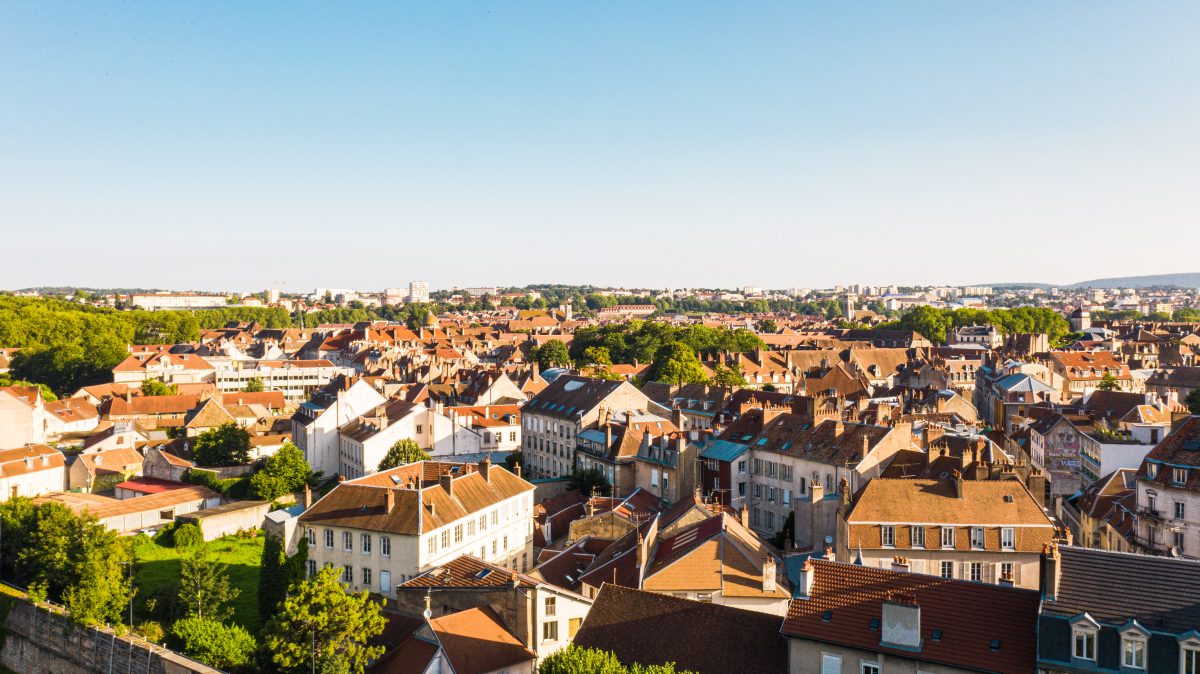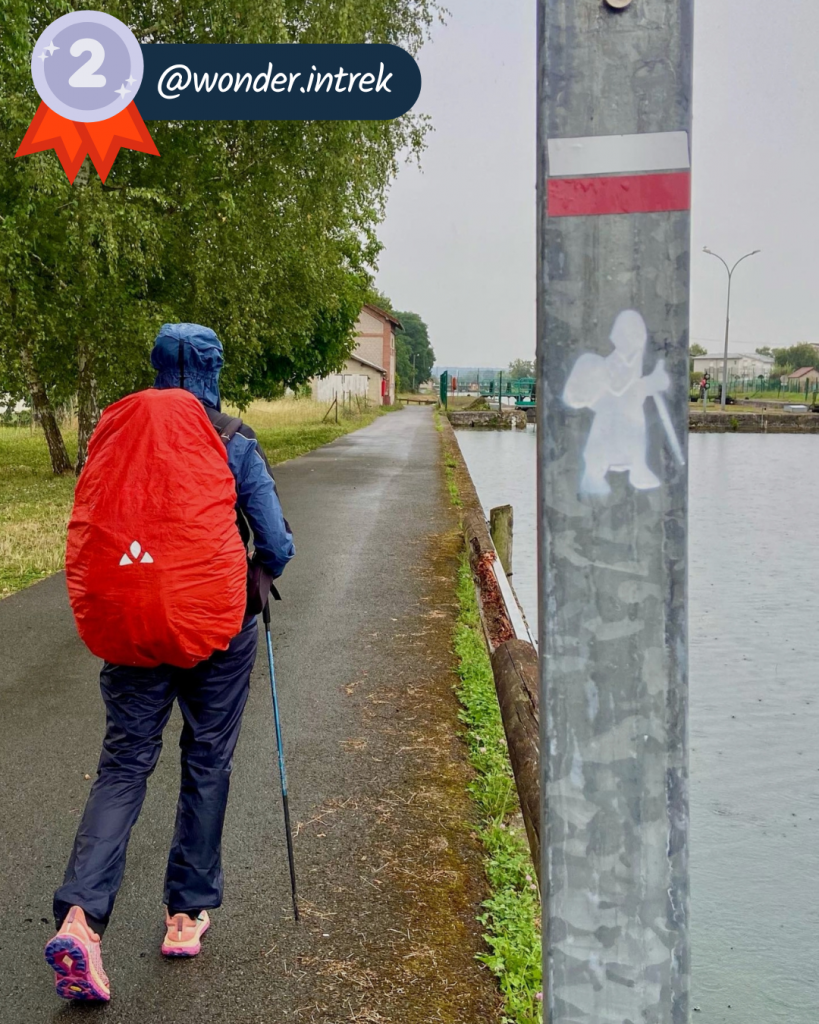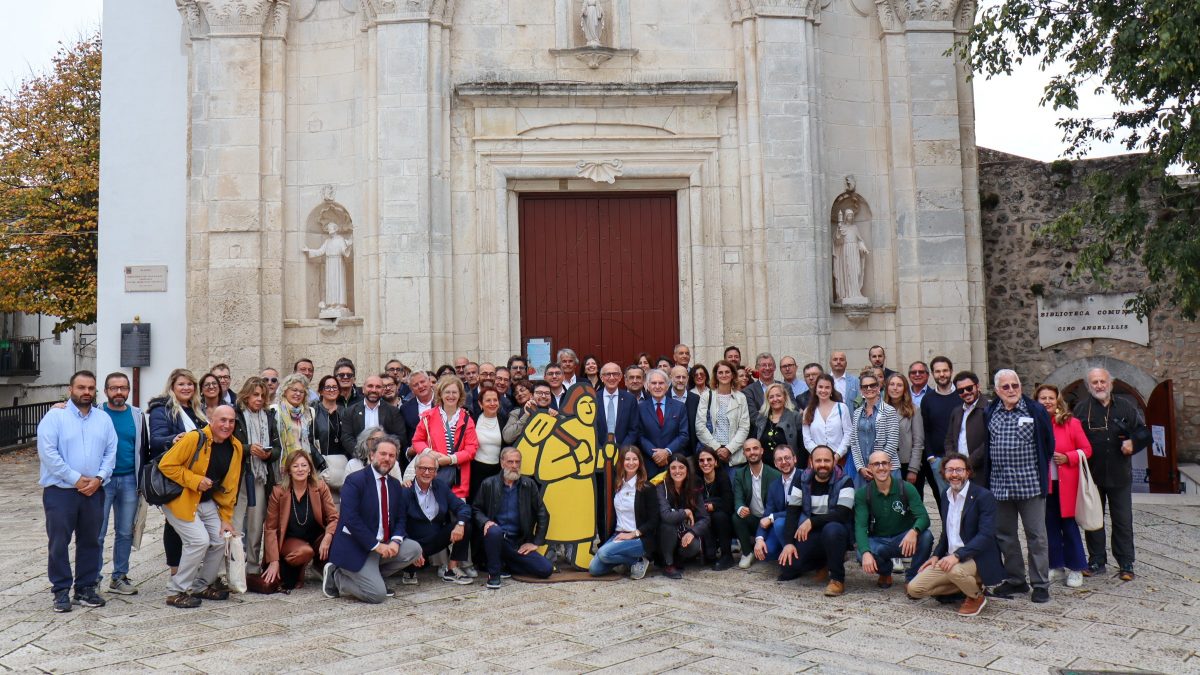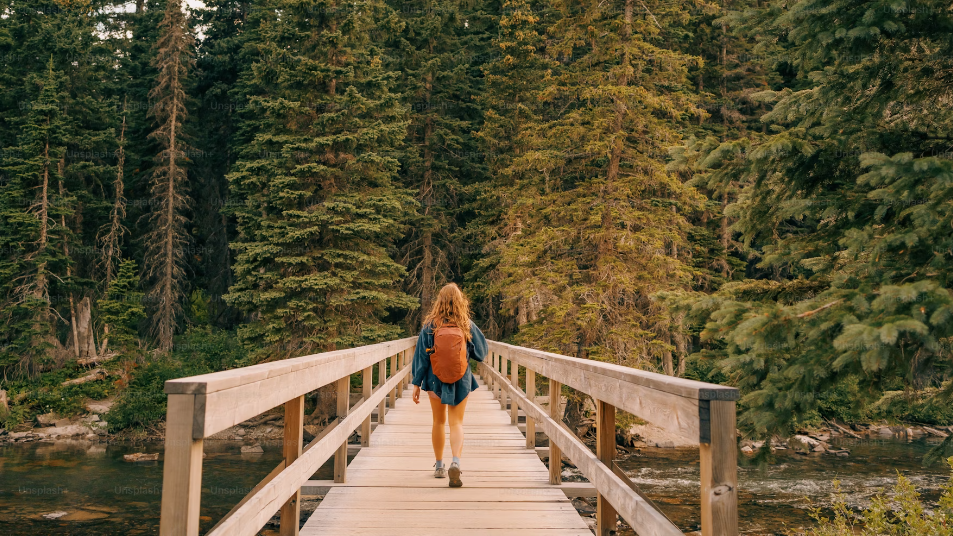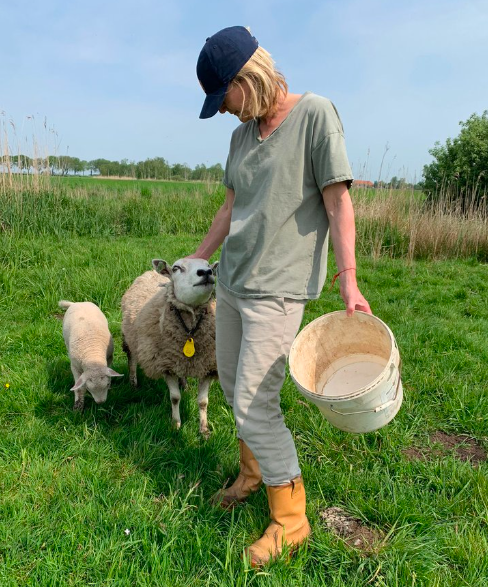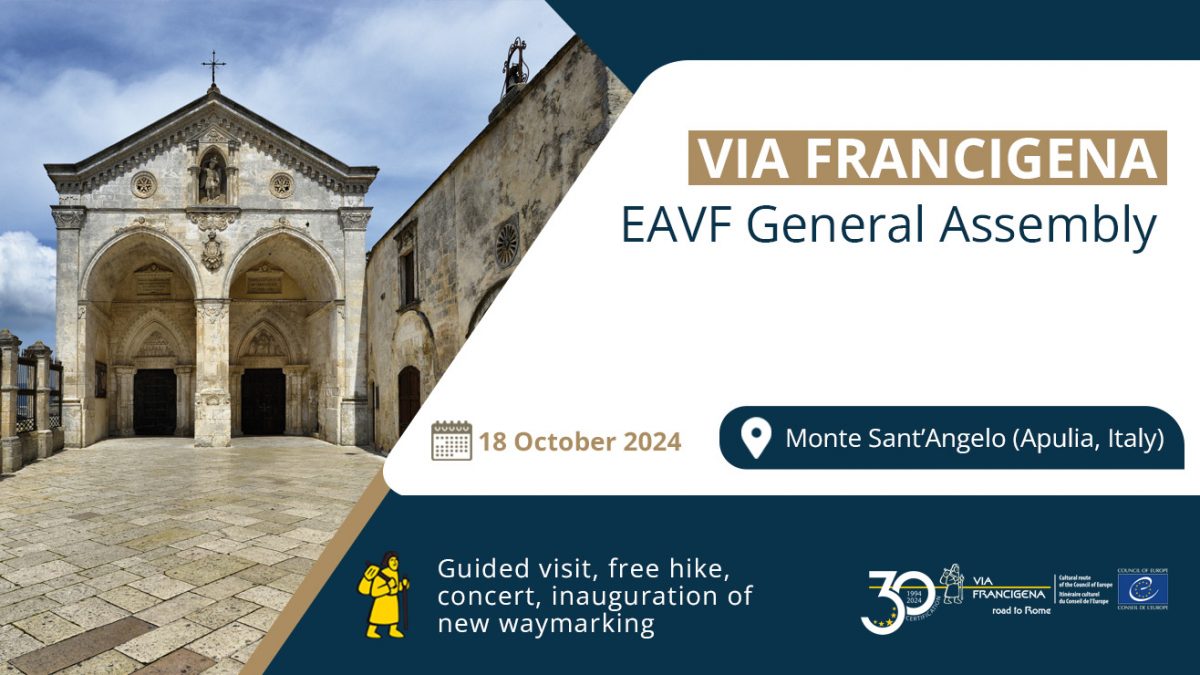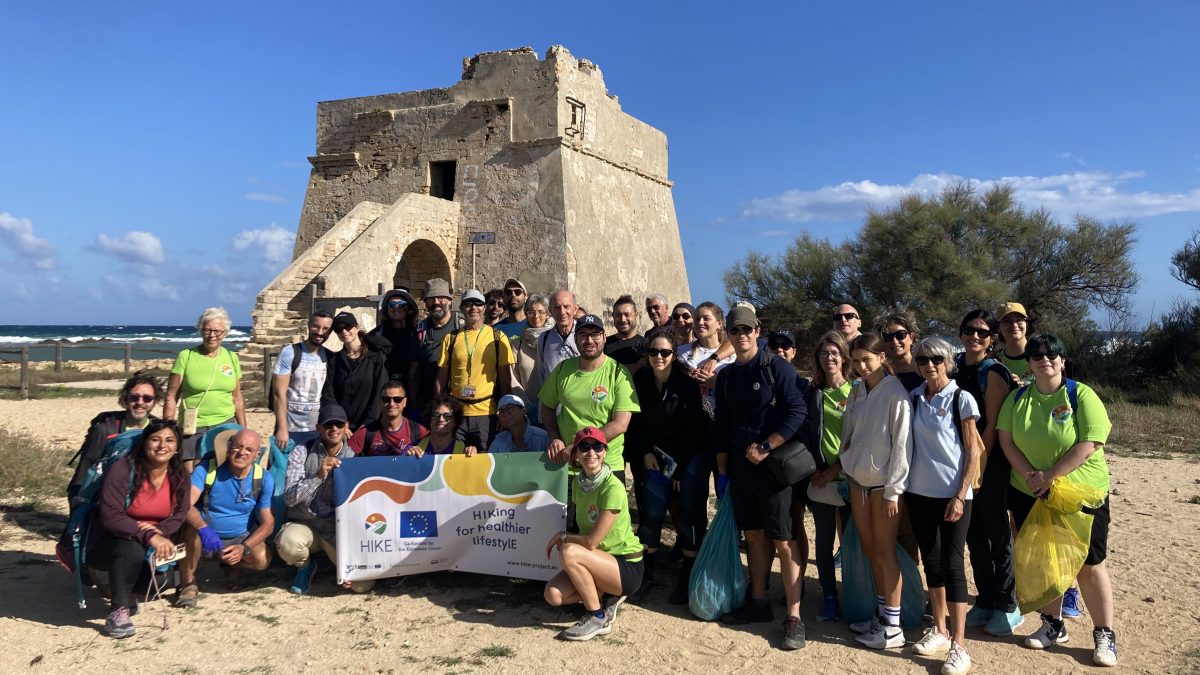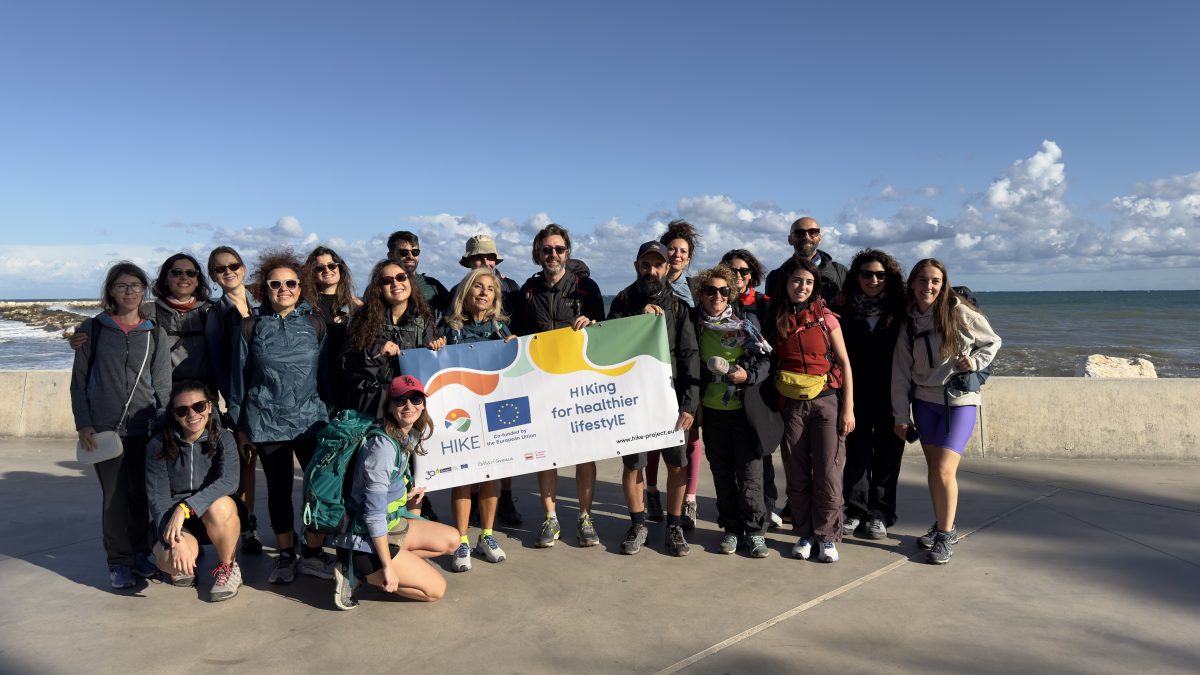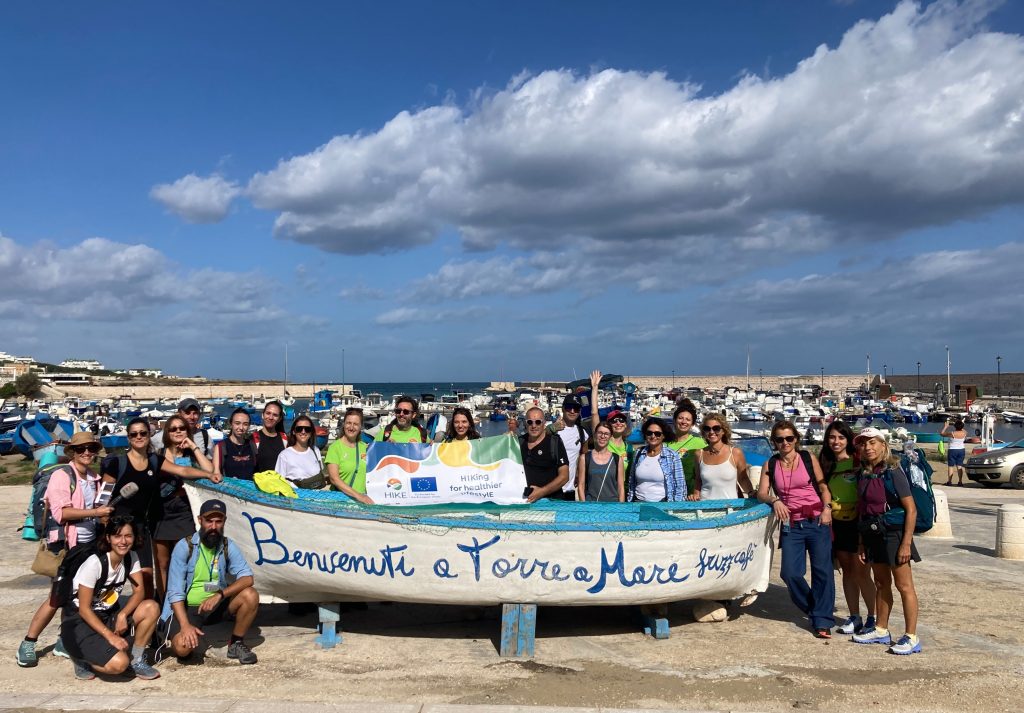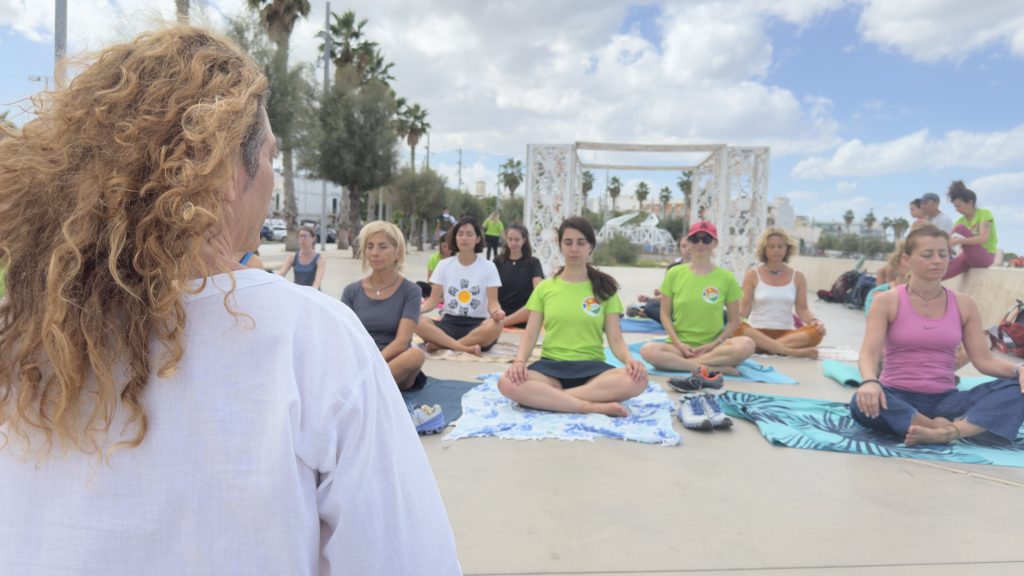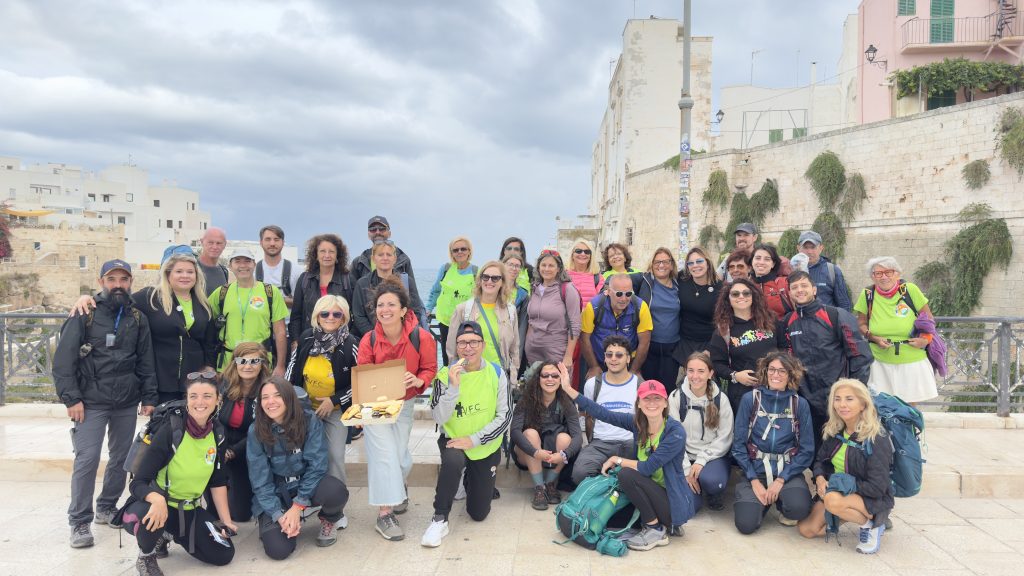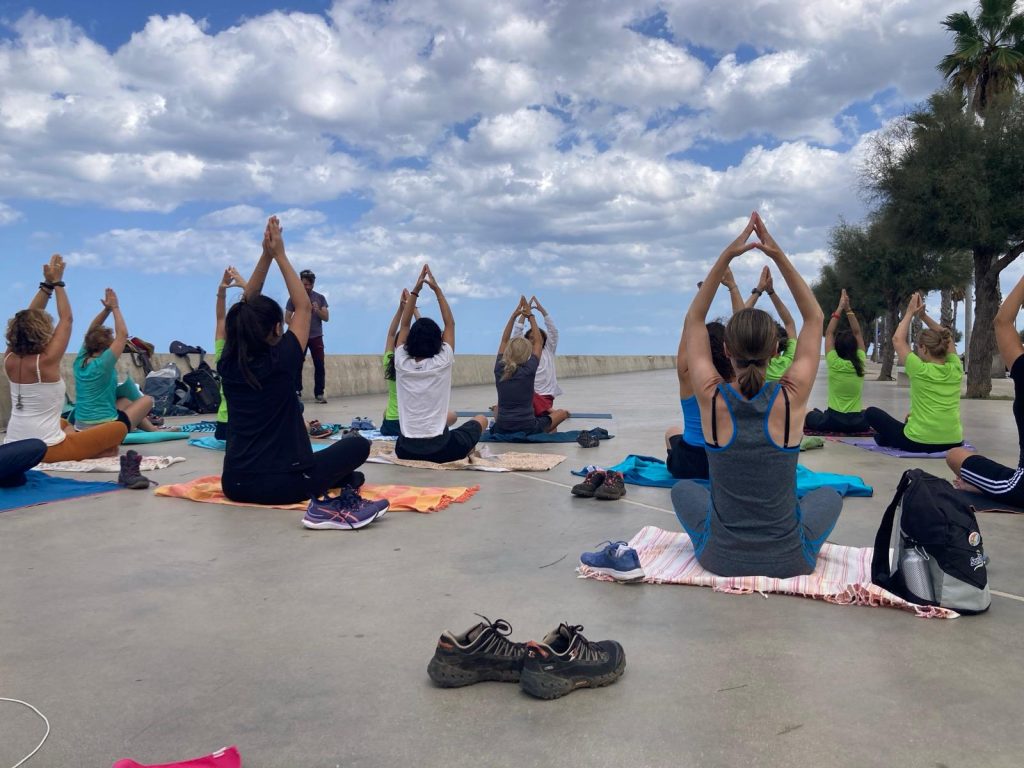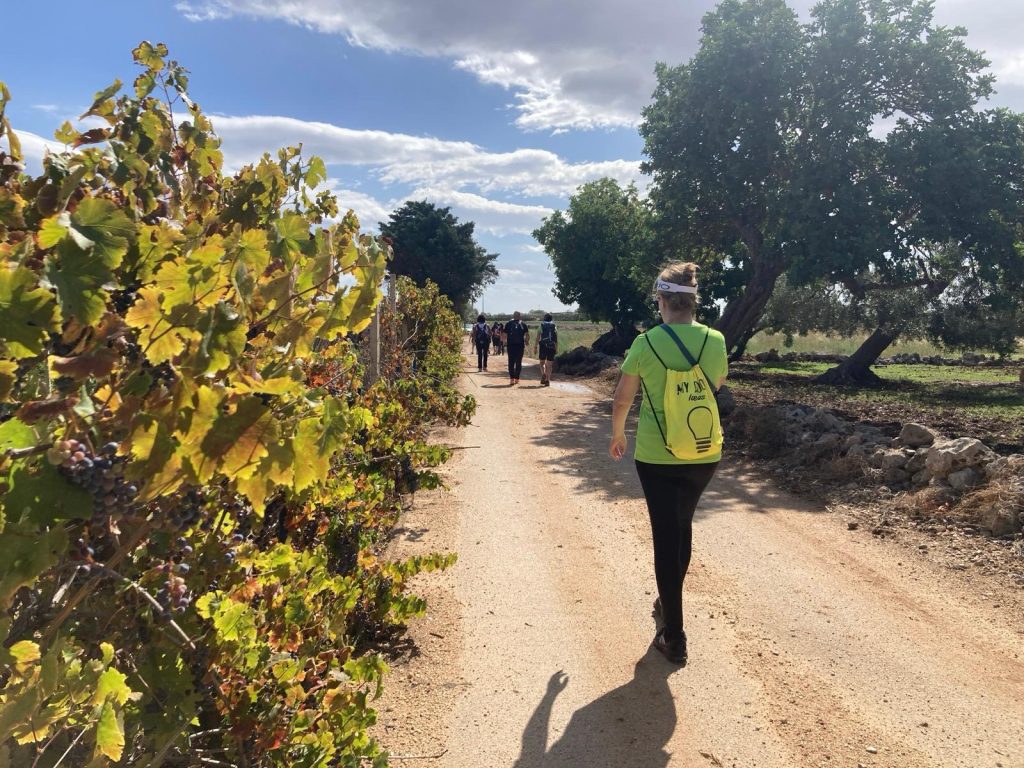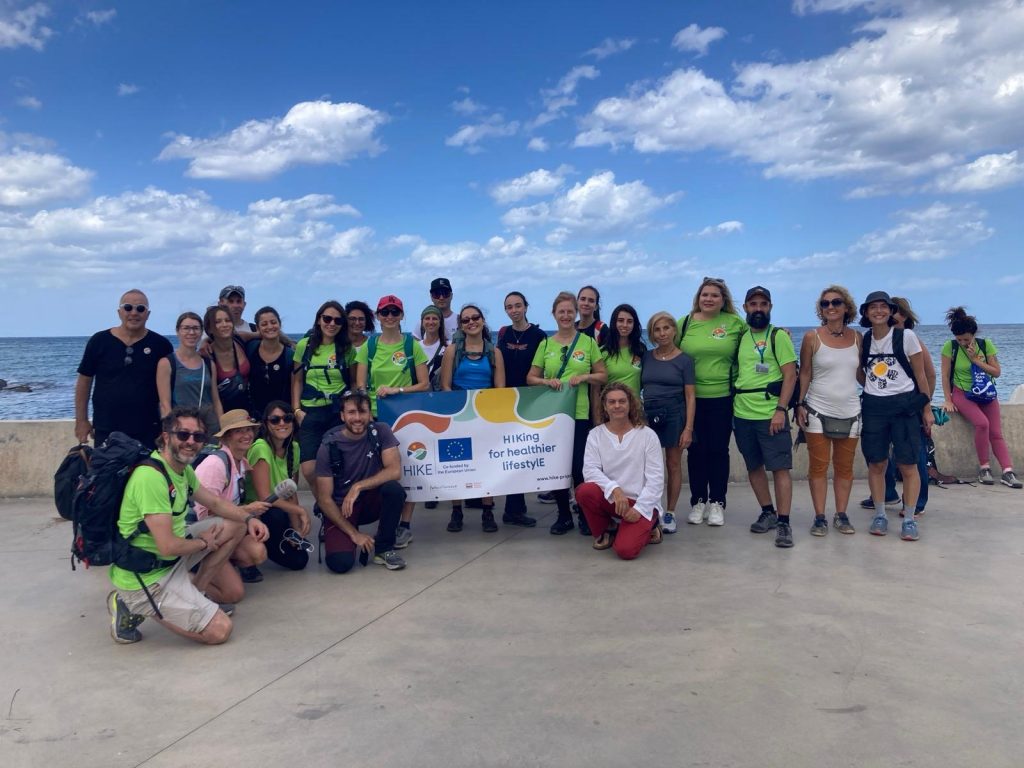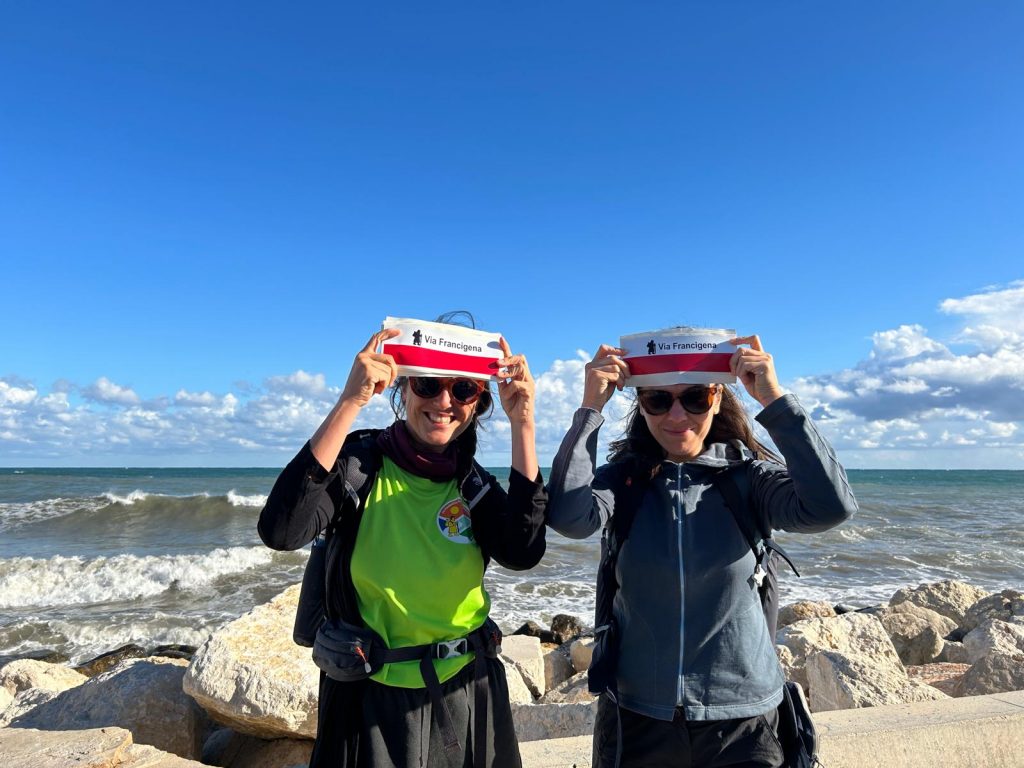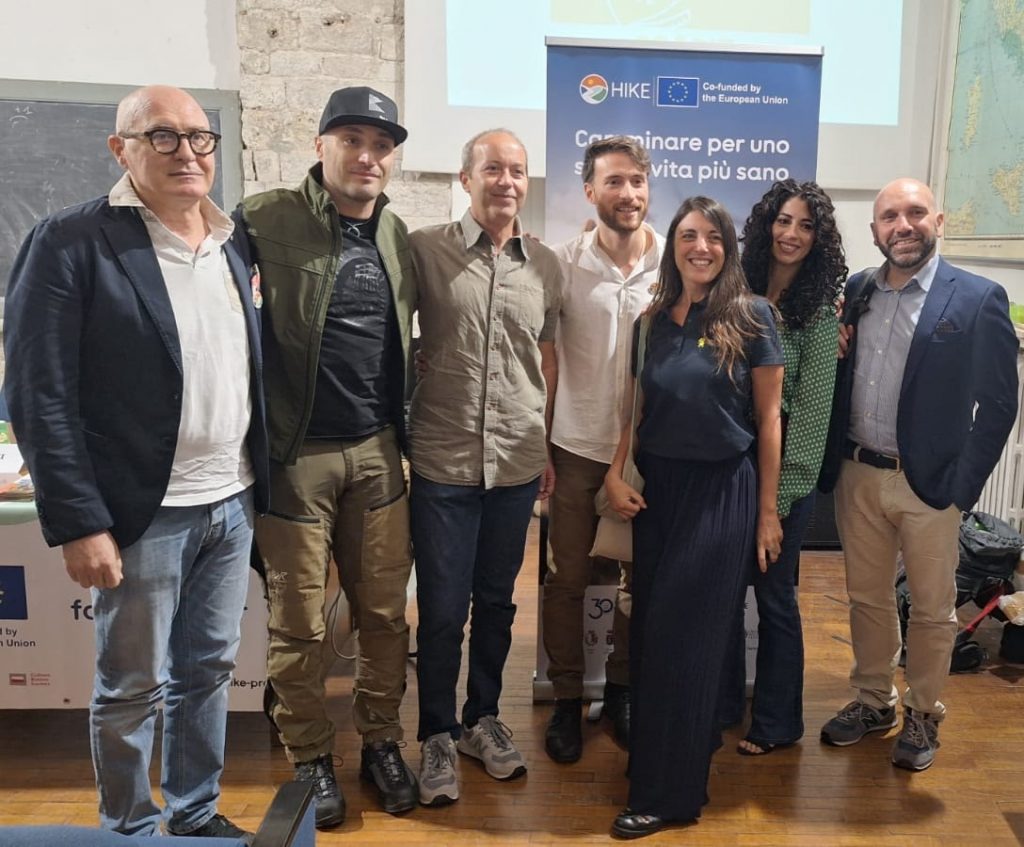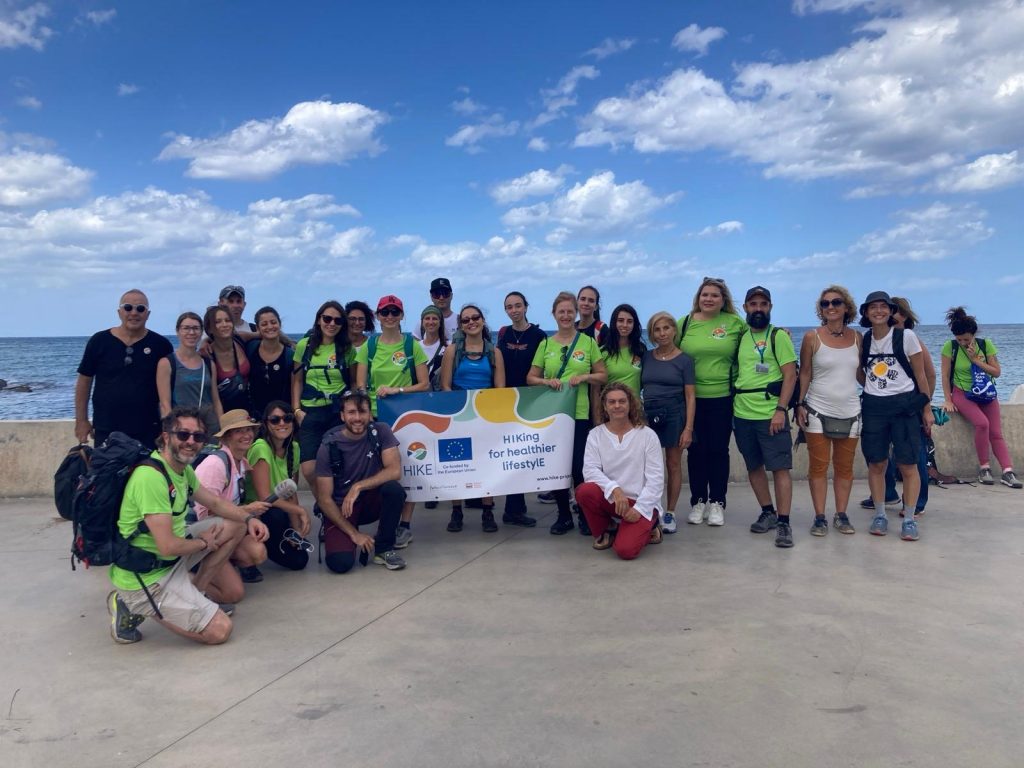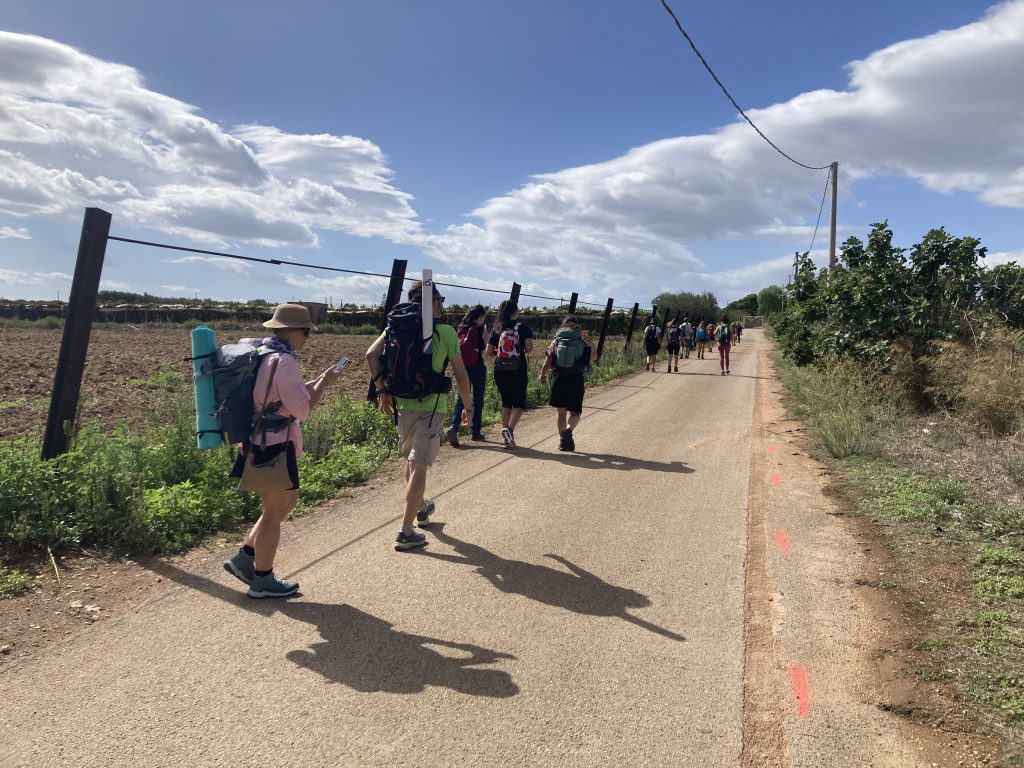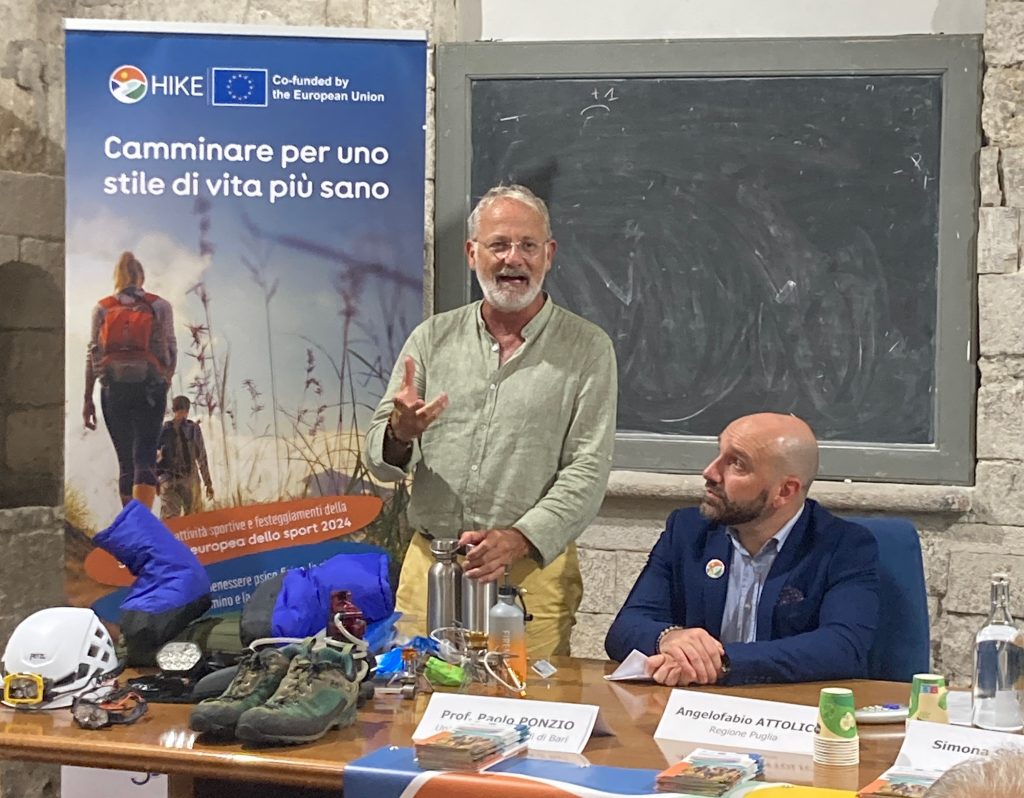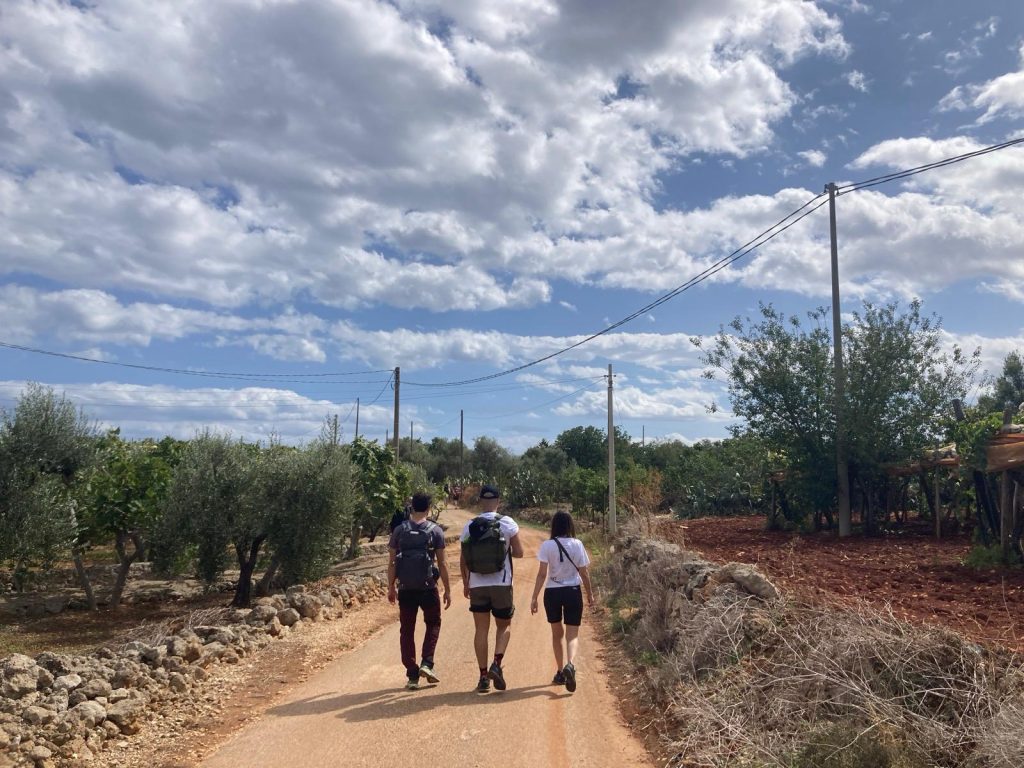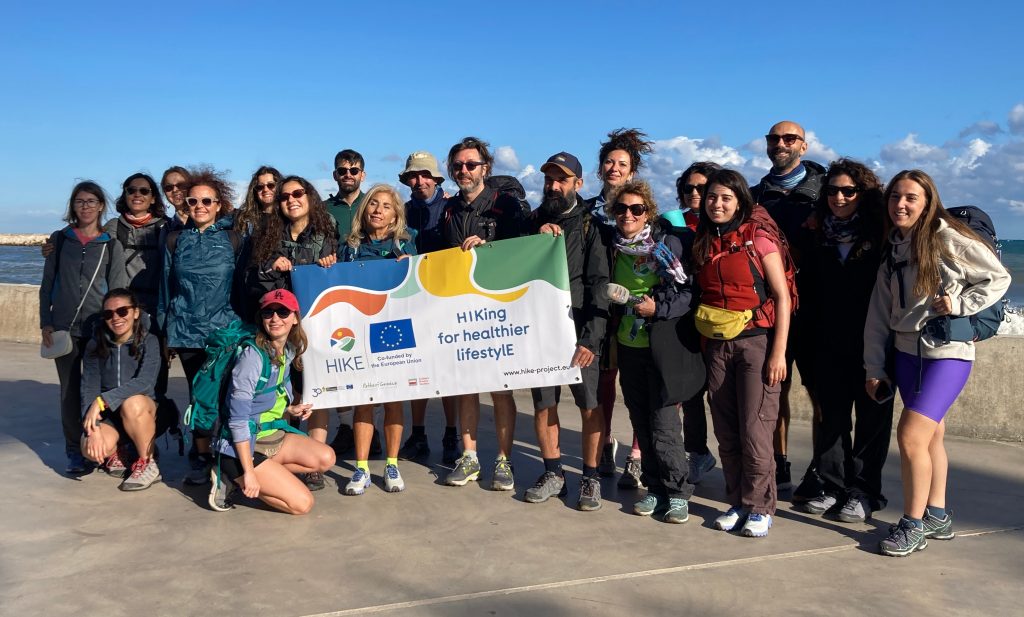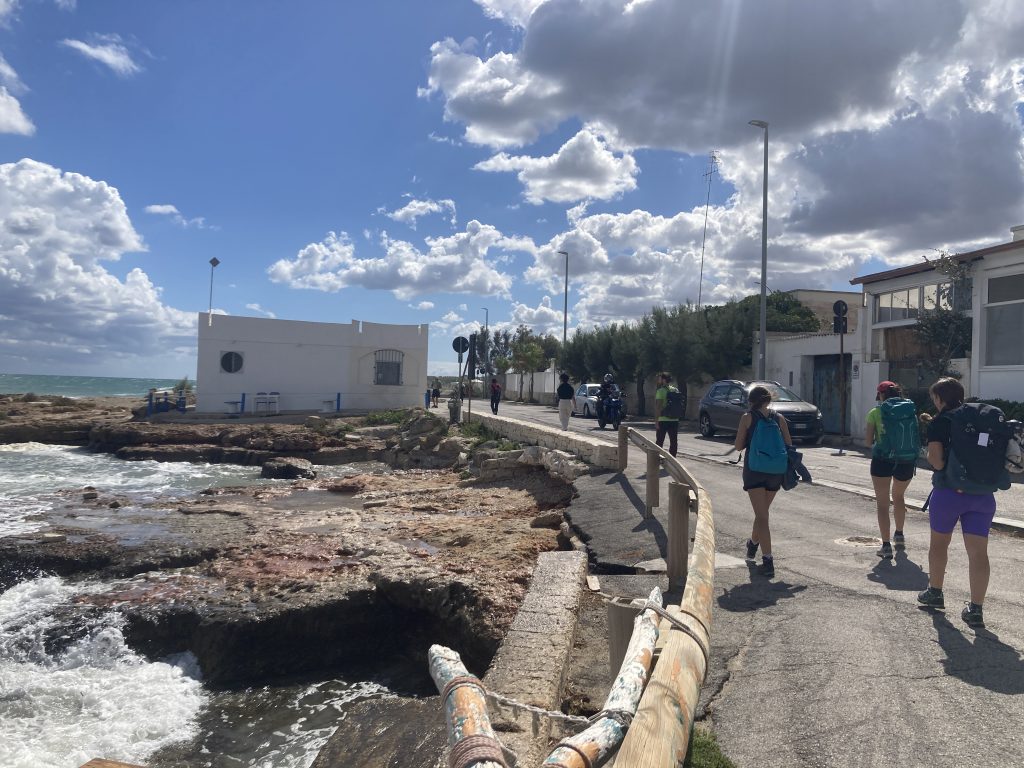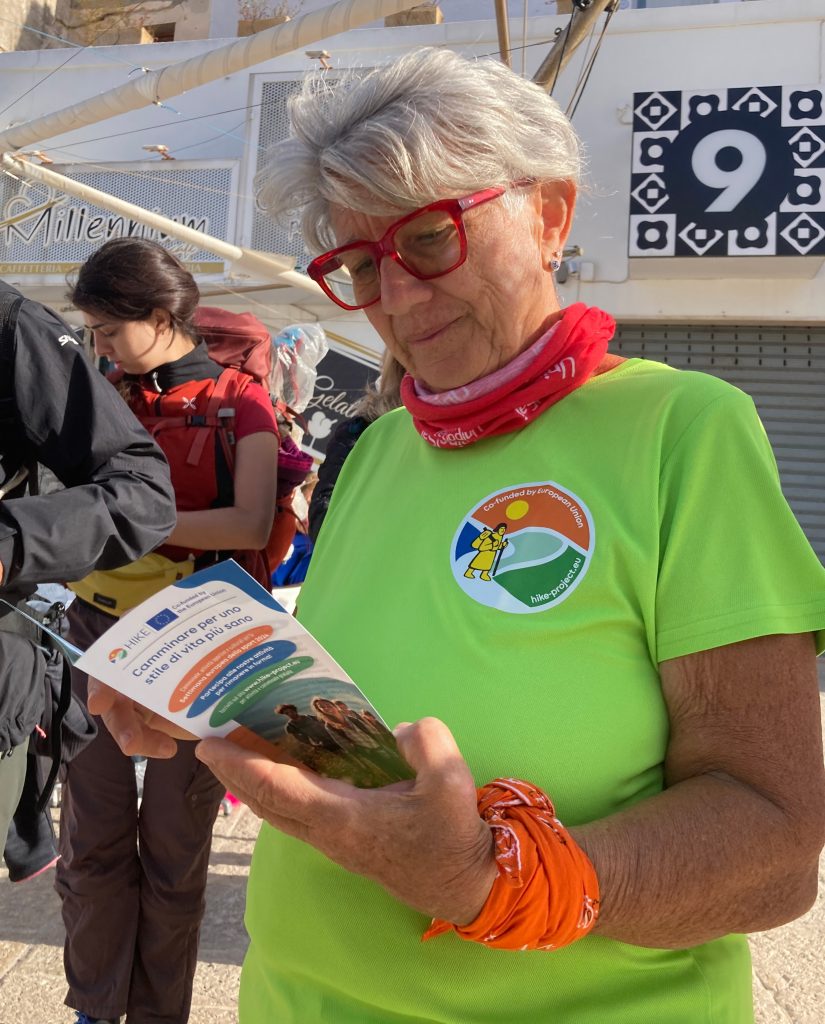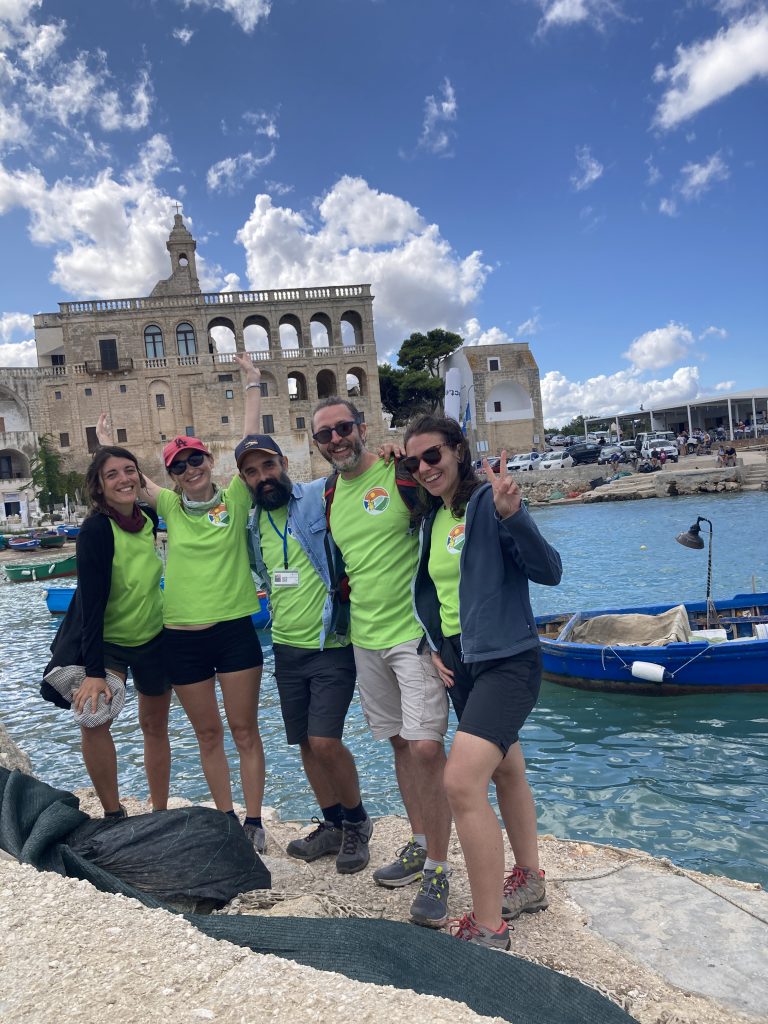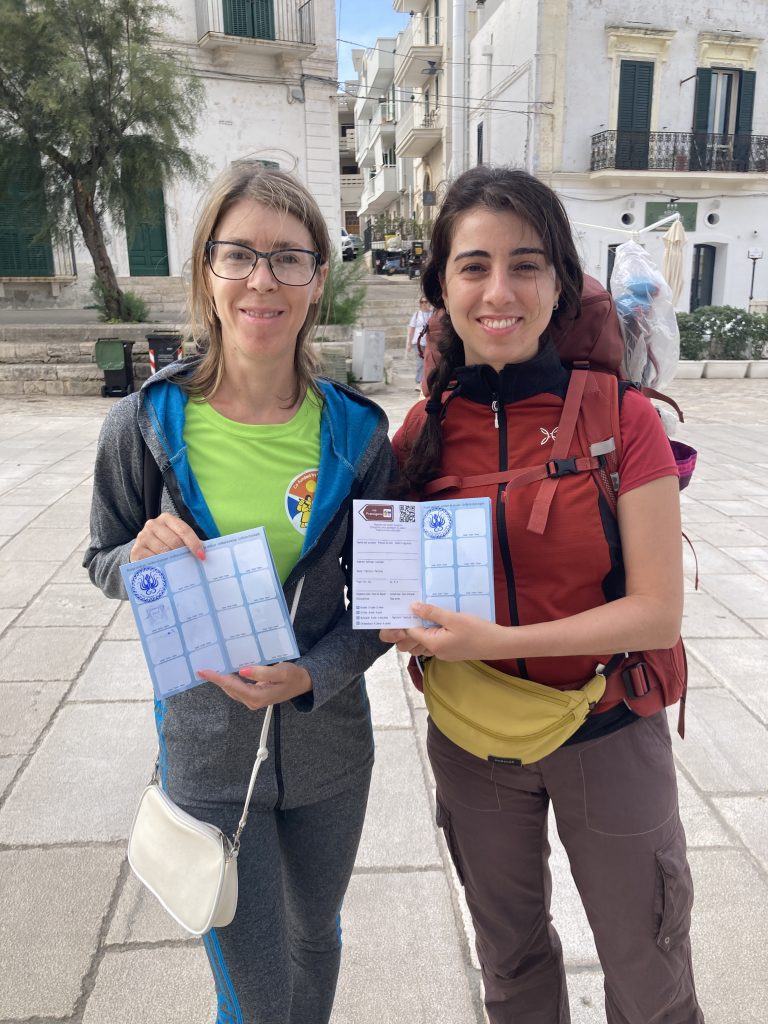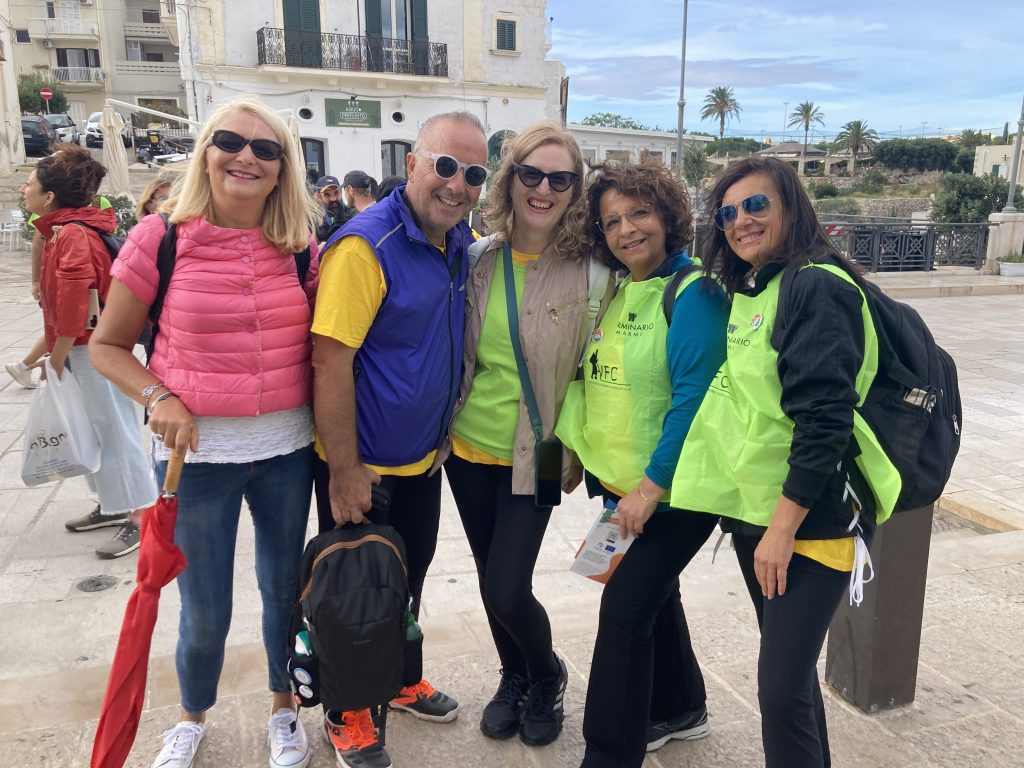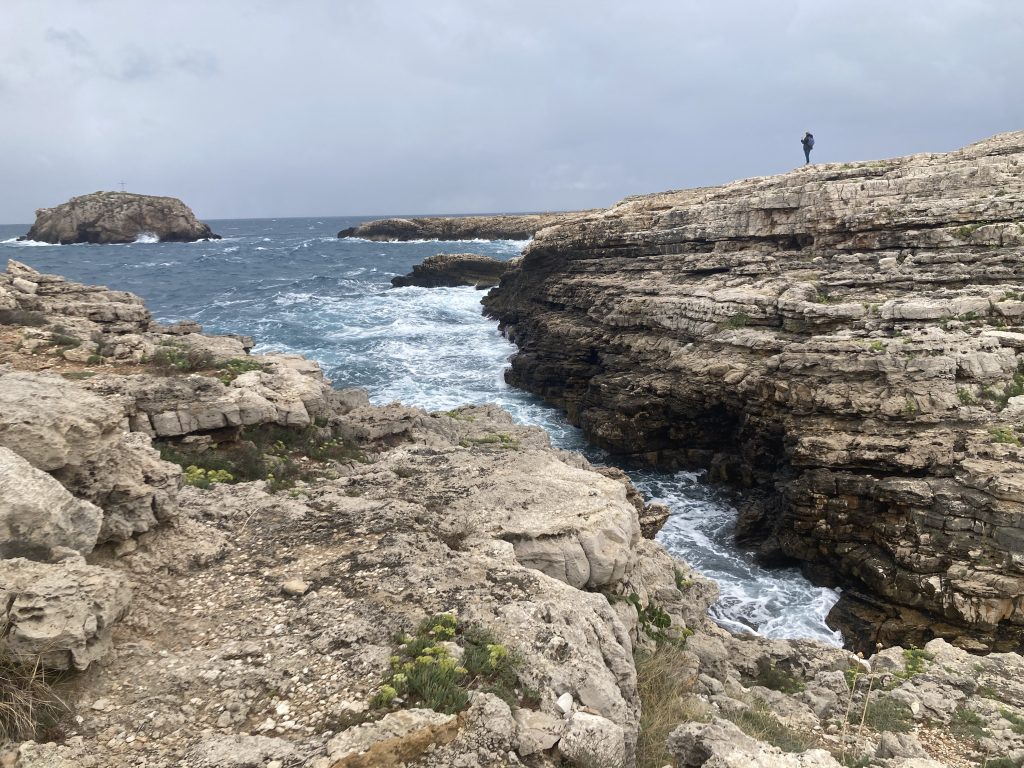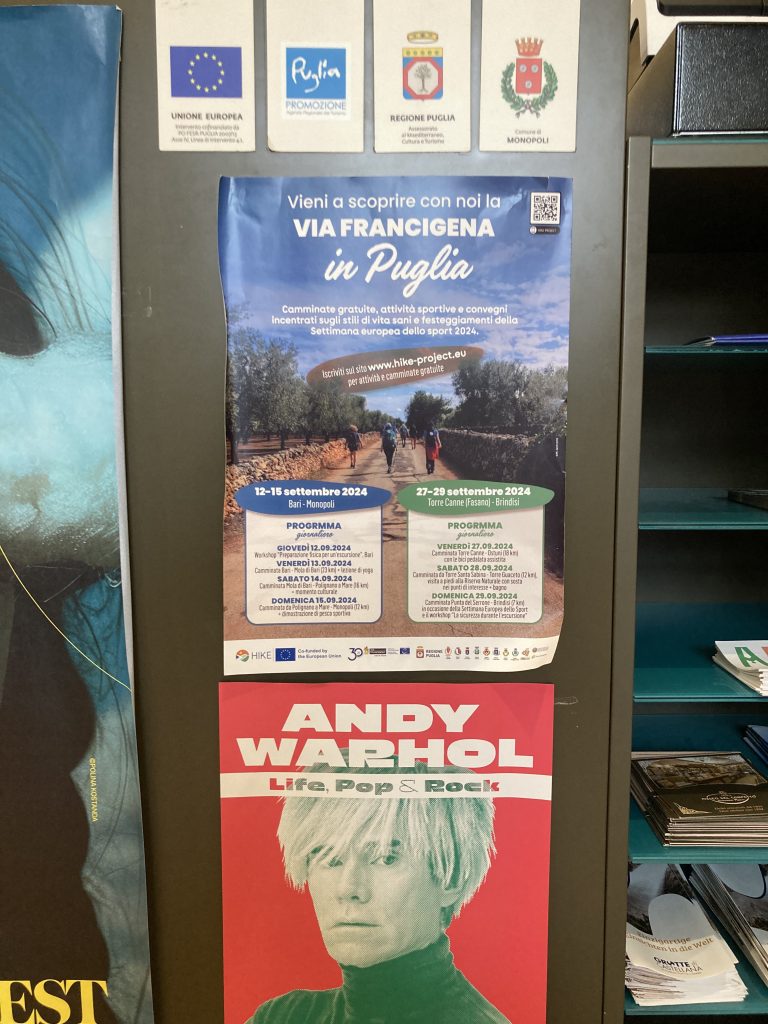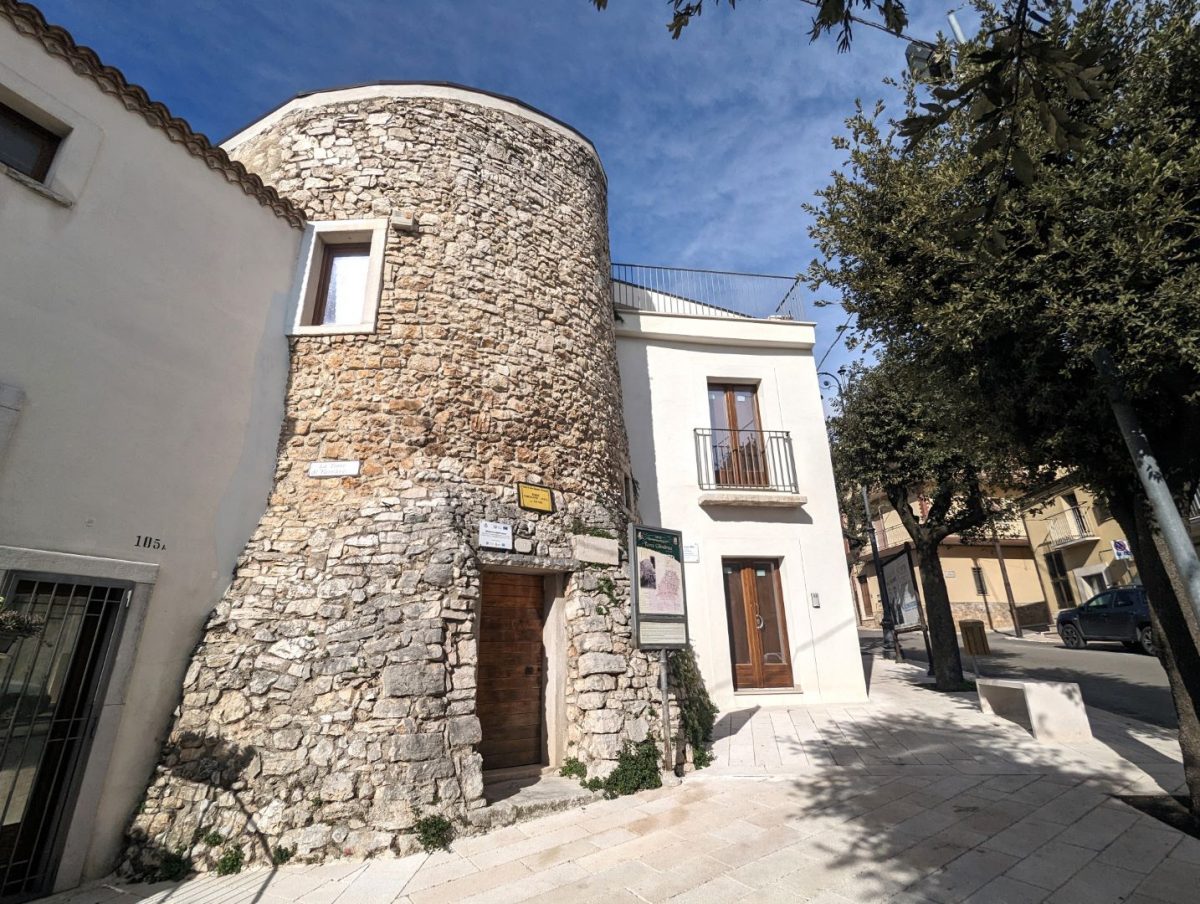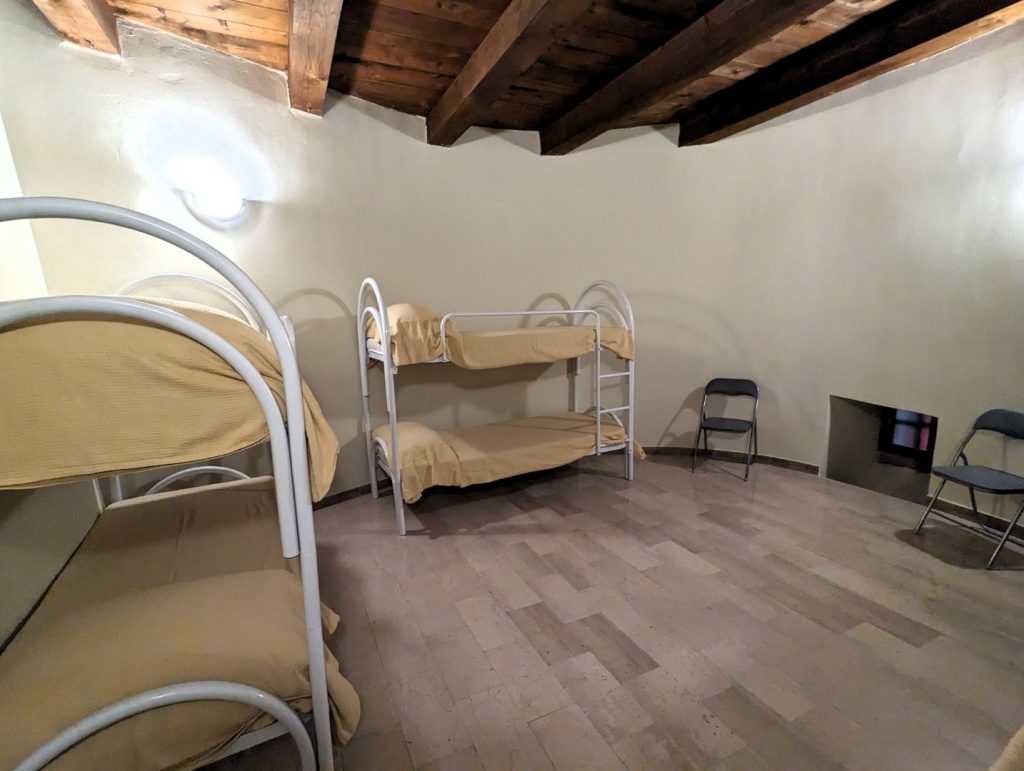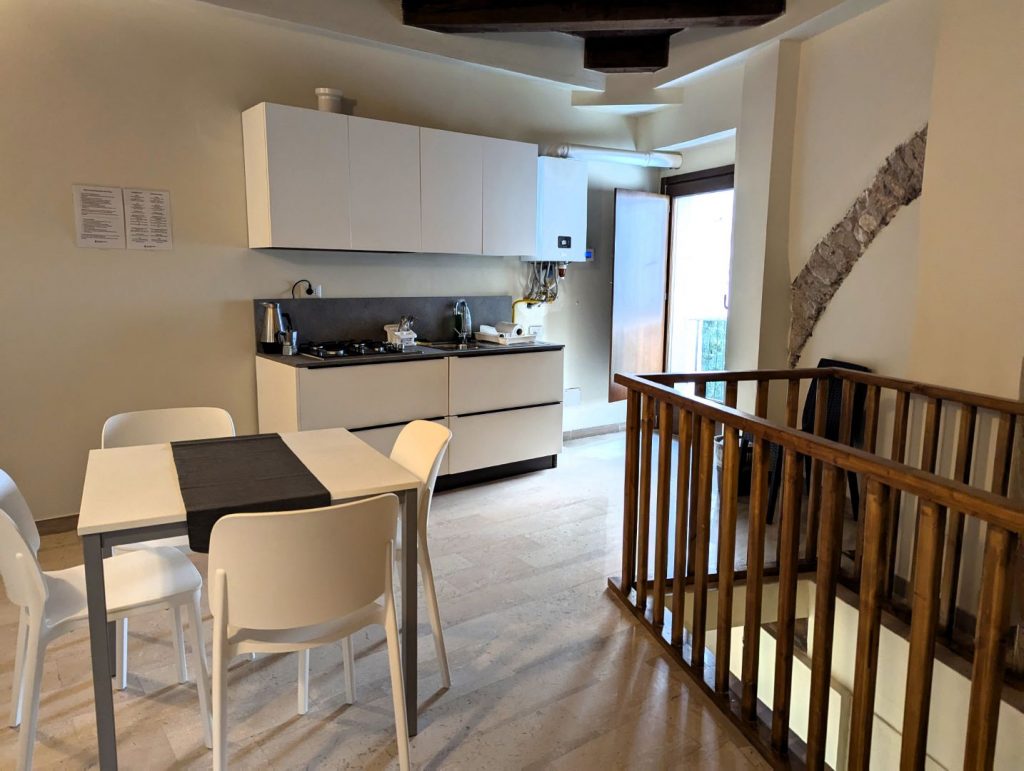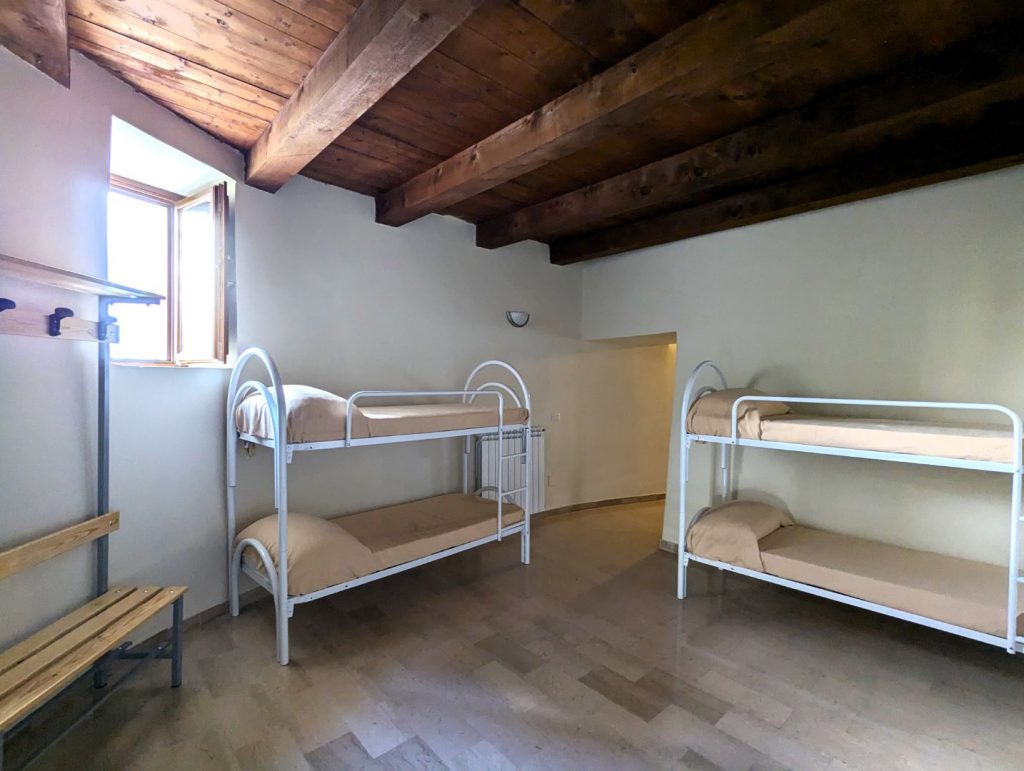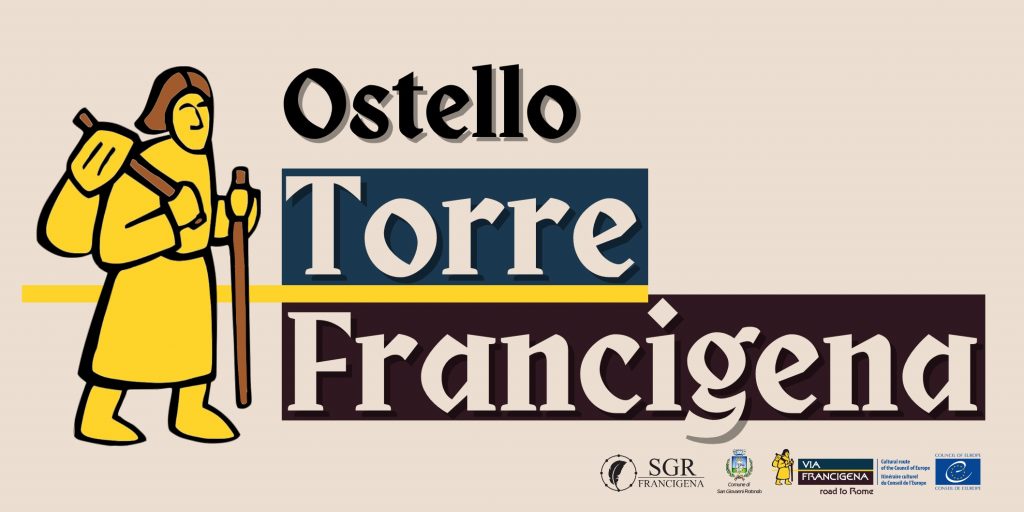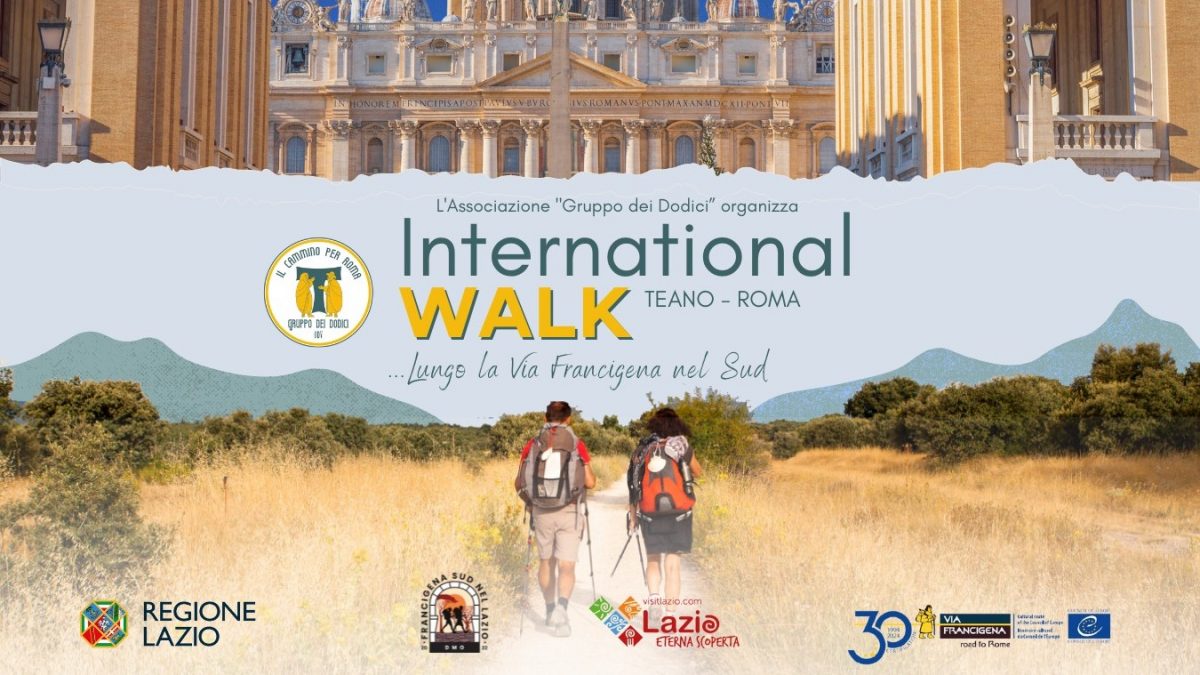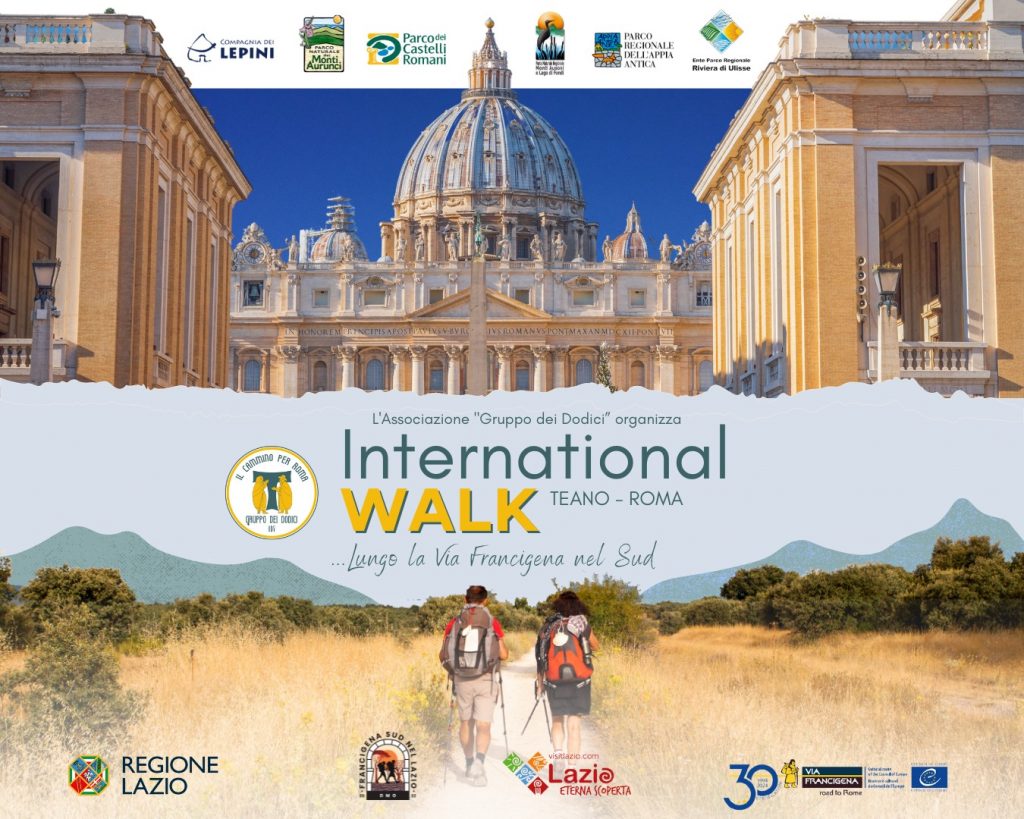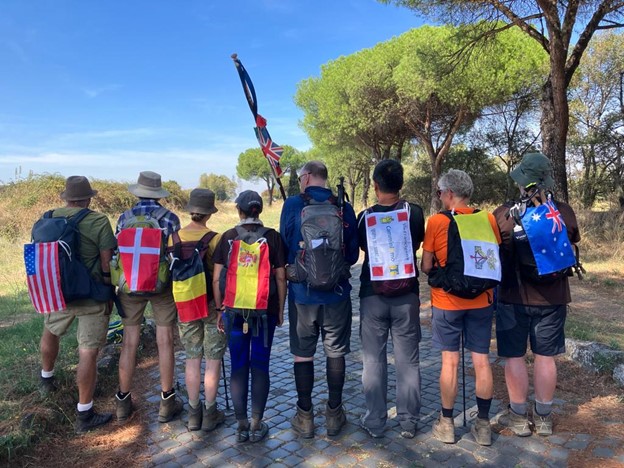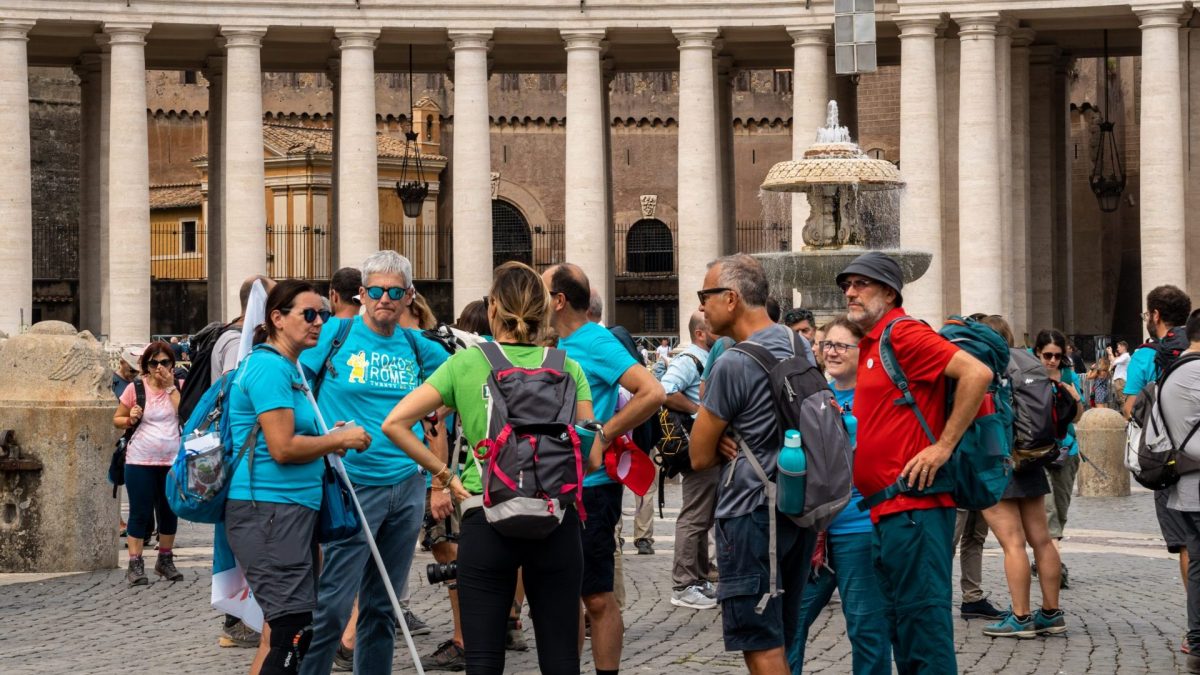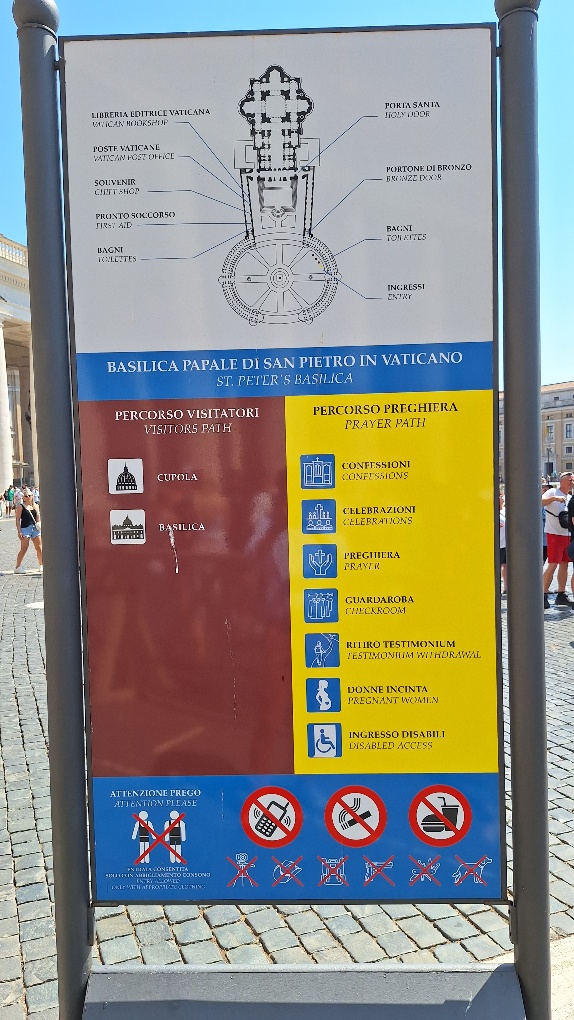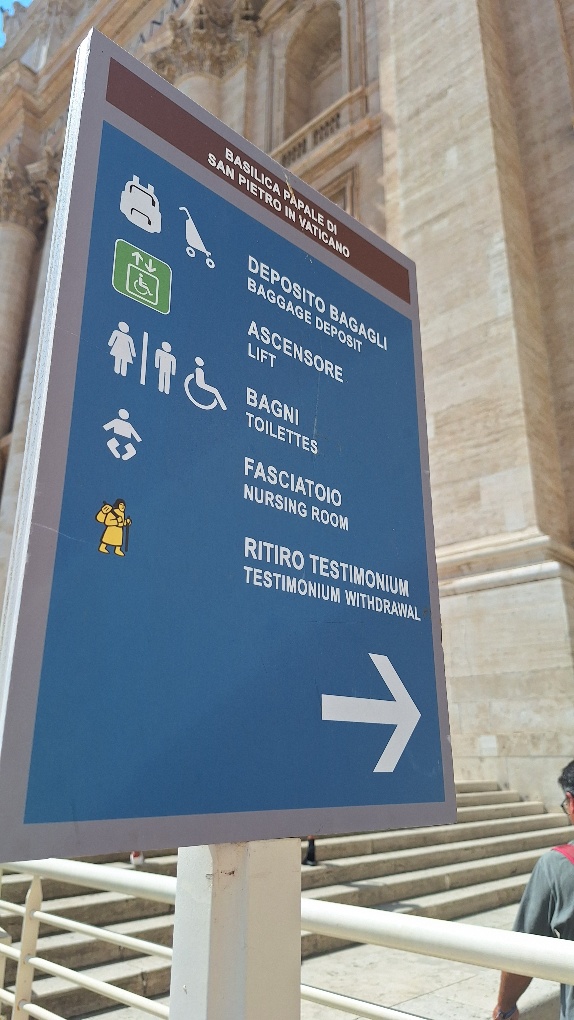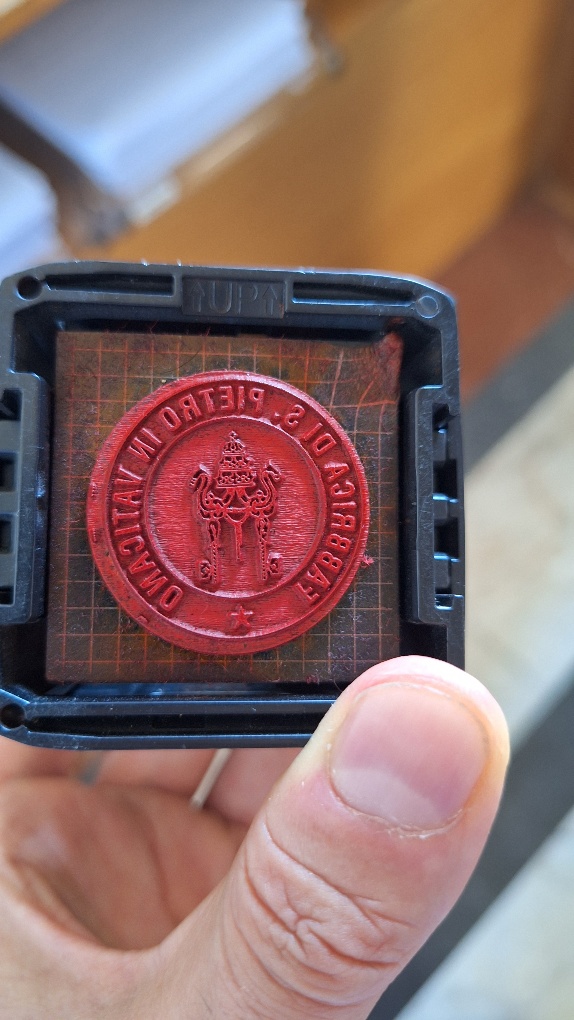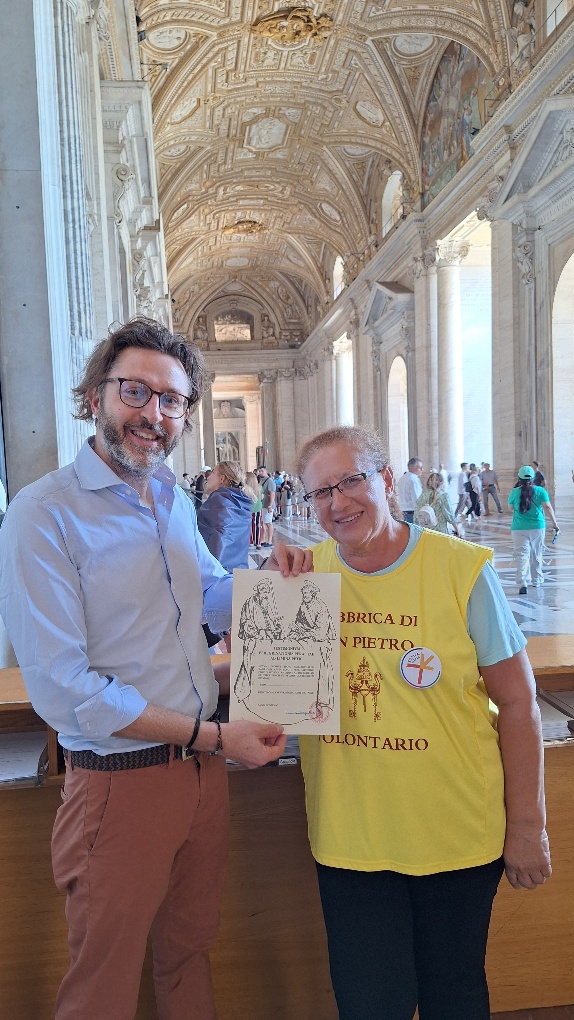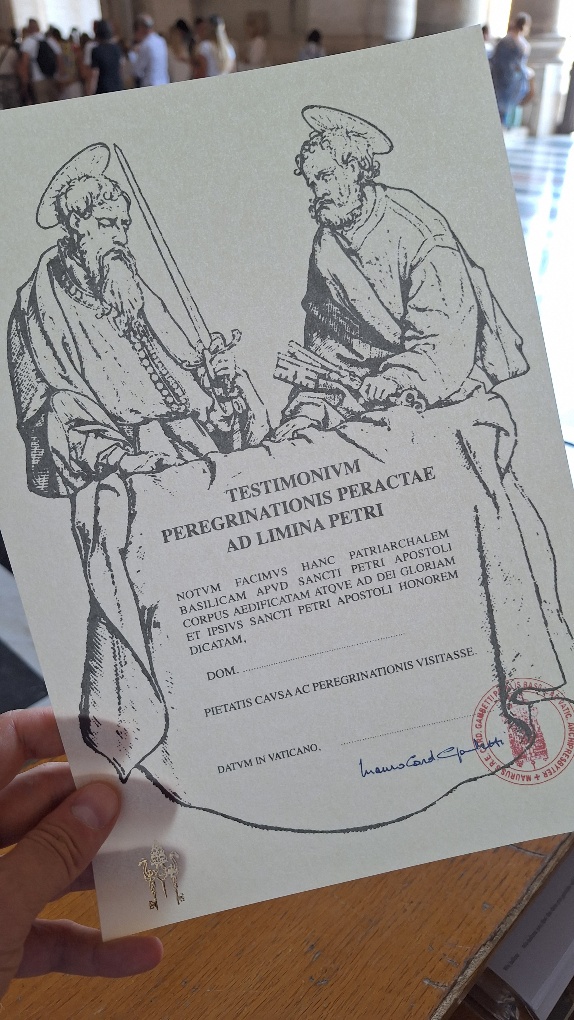Over 130 participants took part in the EAVF General Assembly, held in Monte Sant’Angelo on Friday 18 October. The participation of members, friends and partners from Italy, England, France and Switzerland – the four countries crossed by the Francigena, was very heartfelt. The event was hosted by the municipality of Monte Sant’Angelo with contribution of the Apulia Region in collaboration with the Monte Sant’Angelo Francigena Association and Italea Puglia.
The AEVF Assembly returned to Apulia 5 years after its historic meeting in Bari, which approved the extension of the Via Francigena from Rome to Santa Maria di Leuca on 18 October 2019.
The institutional greetings were given by the Mayor of Monte Sant’Angelo Pierpaolo D’Arienzo, the Director of the Tourism Department of the Apulia Region Aldo Patruno and the EAVF President Francesco Ferrari, who chaired the meeting. The President of the Apulia Region Michele Emiliano also greeted the participants via teleconference.
The new EAVF member – the municipality of Nicorvo (Lombardy) and the friend association of Stornara (Apulia) were warmly welcomed to the Francigena family, making it 244 full members and 94 friends association.
The Assembly also celebrated the winners of the Via Francigena Best Practice 2023, awarding the “Frangiscotto della Via Francigena” by Via Francigena Canosa di Puglia association, Conference on Slow Tourism and the Via Francigena by the municipality of Pavia, project “Francigena for All” by the Piedmont region.
One of the highlights of the meeting was the unanimous approval of the Francigena Britannica, the historic pedestrian route of 150 km connecting London and Canterbury, zero km of the Via Francigena. This itinerary was developed and presented by the Confraternity of Pilgrims to Rome, EAVF friend association, strongly supported by EAVF and the Canterbury administration.
An update on the Via Francigena candidacy as a UNESCO World Heritage Site was given by the Councillor of the Tuscany Region Francesco Gazzetti.
A special session was dedicated to the exchange of best practices along the entire route, with the spotlight on Apulia and its recent inauguration of the touristic and directional signposting in the framework of the project Asset.
The EAVF projects which received the European Union funds were presented to the members: “HIKE – Hiking for Healthier Lifestyle” in the framework of the Erasmus Sport programme and “Detour – Development of resilient tourism ecosystems along the Mediterranean walking routes” by COSME programme. The projects, conducted with international partners from Greece, Turkey and Bulgaria connect Francigena with the rest of Europe.
Then the meeting on cultural routes in France was presented – to be held in Besançon on 25 November, it received support from the French Ministry of Culture.
The Association Swiss Via Francigena also showcased its several ongoing activities.
Finally, the 2025 tourist promotion project on the Via Francigena, supported by the Italian Ministry of Tourism and the Lazio region, was shared with the members.
On the day of the assembly, two important events took place: the inauguration of the official signposting realised with the contribution of the Apulia Region, and the meeting of the volunteer associations along the Via Francigena in the South.
The rich cultural programme was organized by the municipality of Monte Sant’Angelo, offering concerts, exhibitions, guided tours and convivial moments. On 19 October the members took part in a short walk along the Via Francigena animated by Italea Puglia and inspired by HIKE project.
The EAVF assembly provided a great opportunity for exchange and discussion, as well as for development of collaborations between administrations and associations in the various countries involved.
At the beginning of the assembly, a moment of remembrance was dedicated to the late president Massimo Tedeschi, who founded the EAVF 23 years ago. The whole Via Francigena family will continue his work to further develop the European network of dialogue and cooperation.




